Man of Aran is a 1934 Irish fictional documentary (ethnofiction) film directed by Robert J. Flaherty about life on the Aran Islands off the western coast of Ireland. It portrays characters living in premodern conditions, documenting their daily routines such as fishing off high cliffs, farming potatoes where there is little soil, and hunting for huge basking sharks to get liver oil for lamps. Some situations are fabricated, such as one scene in which the shark fishermen are almost lost at sea in a sudden gale. Additionally, the family members shown are not actually related, having been chosen from among the islanders for their photogenic qualities.
| Man of Aran | |
|---|---|
| Directed by | Robert J. Flaherty |
| Produced by | Michael Balcon |
| Written by | Robert J. Flaherty |
| Starring | Colman 'Tiger' King Maggie Dirrane Michael Dillane |
| Music by | John D. H. Greenwood |
| Cinematography | Robert J. Flaherty |
| Edited by | John Goldman |
Production company | Gainsborough Pictures |
| Distributed by | Gaumont British Distributors |
Release date |
|
Running time | 76 minutes |
| Country | Ireland; Irish Free State |
| Language | Irish, English |
George Stoney's 1978 documentary How the Myth was Made, which is included in the special features of the DVD, relates that the Aran Islanders had not hunted sharks in this way for over fifty years at the time the film was made. Man of Aran is Flaherty's re-creation of culture on the edges of modern society, even though much of the primitive life depicted had been left behind by the 1930s. It is impressive, however, for its drama, for its spectacular cinematography of landscape and seascape, and for its concise editing.
Screenplay
The film opens with a boy crab fishing. We then observe three fishermen landing a flimsy holed currach in the force of the wind and the huge waves. Next, we see some of the hardships of mundane Aran life: making a field on the barren rocks using seaweed and soil scraped out of rock crevices, fixing holes in the boat with a mixture of cloth and tar, rendering the liver of the giant basking shark. The film follows as the men of Aran harpoon the huge beasts from their bád iomartha (a wooden carvel hulled craft), the film ends with another storm sequence where the distressed family on shore watch the prolonged struggle of the boat to land safely against the elements.
- Colman 'Tiger' King as A Man of Aran
- Maggie Dirrane as His Wife
- Michael Dillane as Their Son
- Pat Mullen as Shark Hunter
- Patch 'Red Beard' Ruadh as Shark Hunter
- Patcheen Faherty as Shark Hunter
- Tommy O'Rourke as Shark Hunter
- 'Big Patcheen' Conneely of the West as Canoeman
- Stephen Dirrane as Canoeman
- Pat McDonough as Canoeman
The reputation of Man of Aran rests as much on controversies over truth and accuracy as on its aesthetic achievement. Some contend that Man of Aran is more valuable as a documentary of Robert Flaherty’s vision of life than it is of life itself. Others see it as a betrayal of documentary’s mission, “to tell it like it is”. And yet, according to Richard Barsam, Flaherty is one of the great innovators of the documentary form…creating a nonfiction genre all of his own.
According to non islander but anthropologist John Messenger there are over one hundred factual errors in the film. Among the most notable is the shark hunting sequence, which dominates the latter half of the story. Kimball says this practice had disappeared so long ago that the islanders didn't know how to make or use the harpoons and had to be taught the skills of the hunt. Messenger who visited Islands between 1958 and 1968 goes further, claiming that the Islanders had never engaged in shark hunting then, or at any time in the past. Flaherty brought fisherman from Scotland to teach the locals how it is done. “Flaherty…created new customs, such as shark fishing, and seriously distorted numerous indigenous ones in order to make the Man of Aran fit his preconceptions and titillate the camera.” Flaherty himself admits the shark fishing sequence was needed for the box-office.
However the claim is not correct as whale and shark fishing was both known and commercial up until much more recent times. Arranmore Whaling Co. 1908-1913; Blacksod Whaling Co. 1910 - 1914; Akties Nordhavet Co.(Northern Seas) / Blacksod Whaling Co 1920 - 1922 only 11 years not hundreds as claimed in critique, and only 11 years back whaling was occurring on a commercial scale.
Other claims of falsehoods include creating the Aran family who were unrelated cast members handpicked by Flaherty to play the roles of mother, father, and son. In another sequence Flaherty shows the mother buffeted by a storm as she carries seaweed along the Inishmore cliffs. What appears to be a traditional activity carried out by Aran women is a fabrication. The seaweed is collected for fertilization and is gathered from the low lying shores twice a month and only when the tides are absolutely calm. And Kimball points out that religion which is deeply rooted in the Islanders lives, even among the locally recruited actors, is entirely absent. Flaherty also exposed the Islanders to great risk asking them to perform the most astonishing feats in stormy seas despite the fact none of the Islanders could swim. As Flaherty says, “looking back I should have been shot for what I asked these superb people to do for the film…for the enormous risks…and all for the sake of a keg of porter and five pound a piece.”
The full extent of Man of Aran’s deceptions was revealed at the 1978 Ethnographic Film Conference in Canberra, Australia. The conference had gathered, in part, to praise direct cinema which in contrast to the classic tradition promised a new level of realistic interpretation. This new form swept away staging, and reconstruction to present a more accurate picture of the world. The debate was touched off by a screening of Flaherty’s Man of Aran followed by George Stoney’s just completed documentary exploration of Robert Flaherty’s Man of Aran, How the Myth was Made – the resulting exchange was “tumultuous”. As James Roy MacBean says “while appreciative of Flaherty’s poetic imagery had popped the lid off all the distortions and omissions in Flaherty’s highly romanticized depiction of life on the Aran Islands.” At the time Stoney’s revelatory documentary had left many at the conference incensed at what they now saw as Flaherty’s blatant falsification of the life he had been purported to be documenting.
According to Barsam, “Flaherty’s subjective view of reality – his making it all up - has a romantic basis, idealizing the simple, natural even non-existent life.” He argues, even though Flaherty habitually transforms reality his essential achievement is that of the realist filmmaker. Flaherty as Romantic is shared by Aufderheide, “Flaherty had a powerful romantic belief in the purity of native cultures and he believed that his own culture was spiritually impoverished by comparison.” But taken to the extreme this approach makes no attempt to capture reality but create a romanticized picture of it. “The tragedy is that, being a poet, with a poet's eye, Flaherty’s lie is greater, for he can make romance seem real.”
Aufderheide says, “documentary movies are about real life: they are not real life they are not even windows onto real life. They are portraits of real life, using real life as their raw material…You might then say: is a movie that does its best to represent real life and that doesn’t manipulate it... and yet, there is no way to make a film without manipulating the information. As Flaherty acknowledges, “one often has to distort a thing to catch its true spirit.” How much a documentarian can manipulate and still credibly claim their film to be a truthful portrayal of real life “is a never-ending discussion with many answers.”
Despite these controversies Flaherty remains a pioneer of the documentary whose films are situated in a class of their own within the documentary genre. Kimball argues that Man of Aran was never intended to be an ethnographic documentary film. As he explains, “in a cosmic anthropological sense it could be counted as an artistic rendition of the struggle of man against nature.” Flaherty had immersed himself in the culture to tell the essence of the truth about the Islanders, “ for this reason ethnographic accuracy is an unimportant consideration when the larger goal is some fundamental aspect of mankind.” In Stoney’s film How the Myth was Made, John Goldman, the editor on Man of Aran, is emphatic, “it was not a documentary, it was not intended to be a documentary … it was a piece of poetry.” McNab calls it, “…not so much a conventional documentary as a poetic meditation.” Arthur Calder-Marshall explains, “Flaherty wasn’t interested in actuality, he was interested in his own idea of life.” If the film was intended to be a poetic statement instead of a factual documentary, one has no right to treat is as an ethnographic film now. Barsam asks, is it unreasonable for the artist to distill life over a period of time and deliver only the essence of it? Seen as the story of mankind over a thousand years, the story of Aran is this story of man against the sea .... It is a simple story, but it is an essential story, for nothing emerges from time except bravery. Calder-Marshall suggests the controversies over Man of Aran could have been avoided if had had a publicity advisor, someone as verbally agile as Grierson, he would have made it publicly plain that Man of Aran was not a ‘document’ but an ‘eclogue’ - a pastoral and marine poem.
Brian Winston cautions against unconditionally praising Flaherty’s poetic talent. He argues we have to fully acknowledge his manipulations and distortions, because that is at the heart of understanding both his genius and his contribution to the documentary form. What Flaherty grasped was not only our desire for drama but that it should arise from the life being observed and not imposed from without. By using drama and reconstruction Flaherty created a unique form of documentary, which thrives between “a life as lived and life as narrativised.”
Stung by criticism that British films were flaccid imitations of Hollywood, Michael Balcon of Gaumont British hired the acclaimed writer/director Robert Flaherty and his wife Frances Nanook of the North , Moana , Elephant Boy , The Land and Luisiana to prove British film industry’s cultural excellence as well as commercial success. In 1931 Robert Flaherty set up a studio and laboratory facilities on Inishmore, the largest of the three islands. Flaherty had promised Balcon he could shoot the entire film for 10,000 pounds. Over the next two years he shot over 200,000 feet of film for a 74-minute documentary oftentimes filming the same event time after time. As Flaherty says, "our films are made with film and time, I need lots of both." Balcon eventually called a halt to filming as the costs approached 40,000 pounds.
On 25 April 1934, Man of Aran premiered at the New Gallery in London. The screening had been preceded by a major publicity drive. A stuffed basking shark was put on display in the window of Gaumont British in Wardour Street, and Irish Guards played Irish folk music in the theater foyer on the first night. The islanders were brought over from Aran and paraded before the press and public in their simple homespun island garb. Man of Aran won top prize for the best foreign film at the Venice Festival, (the Mussolini Cup). During the first six months of its release the film grossed about 50,000 pounds – many films had grossed more - but according to Michael Balcon it brought Gaumont British the prestige he wanted.
Like most 1930s documentaries, Man of Aran was shot as a silent film. The intermittent voices, the sound effects and music are only accompaniments to the visuals and not considered integral to the production. Paul Rotha in Documentary Film says, “Man of Aran avoided all important issues raised by sound.”
Flaherty continued to experiment with cinematography especially the long focal lens that he first used in Nanook. He used a variety of lens sizes, even a seventeen-inch long lens, which was twice the size of the camera. He used a spring driven camera that “was simpler in operation than any I have seen and not much heavier to carry than a portable typewriter.”
Man of Aran’s cameraman Richard Leacock was 13 years old when this film was made; he started his coll
Watch movie Man Of Aran online on Amazon
Watch movie Man Of Aran online
Watch The Movie On PrimeDil Hai Ke Manta Nahin Full HD Movie Download
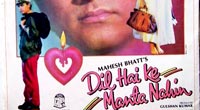
Mere Jeevan Saathi Full HD Movie Download
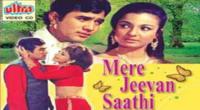
The Power Man- Khalnayak Full HD Movie Download
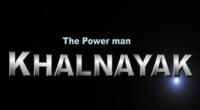
Game (Hindi) Full HD Movie Download
.jpg)
Revolutionary Road Full HD Movie Download

Gupt Sandesh Full HD Movie Download
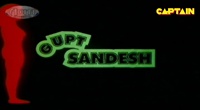
Pacchni Kapuram Full HD Movie Download

Kelviyum Naane Pathilum Naane Full HD Movie Download
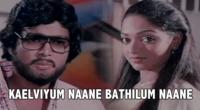
Aval Sumangalithan Full HD Movie Download
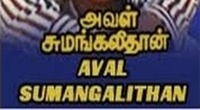
Rajakali Amman Full HD Movie Download
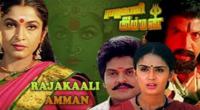
Kanna Koduku Full HD Movie Download
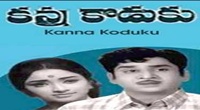
Bai Me Bholi Full HD Movie Download
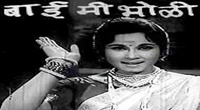
Final Destination 3 Full HD Movie Download

Pooviriyum Pulari Full HD Movie Download

Tenali Raman Full HD Movie Download
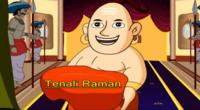
Police Ante Veederaa Full HD Movie Download

Charminar Full HD Movie Download
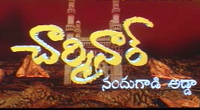
Rustum Full HD Movie Download
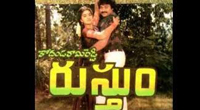
Shankaravam Full HD Movie Download
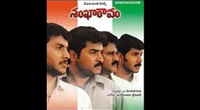
Andha Bichar (Bengali) Full HD Movie Download
.jpg)
Khwab Full HD Movie Download
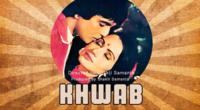
Download latest Movie from bollywood
- 1> baaghi 3
- 2> THE SKY IS PINK MOVIE FULL STORY AND REVIEW
- 3> Luka Chuppi
- 4> TO ALL THE BOYS I’VE LOVED BEFORE
- 5> Kabir Singh
- 6> Street Dancer 3D
- 7> Simmba
- 8> Gone Girl
- 9> The Girl Who Lived
- 10> Ludo
- 11> DILWALE DULHANIA LE JAYENGE
- 12> GUILTY
- 13> The Godfather
- 14> Adventures of Rusty
- 15> Sooryavanshi
- 16> Satyameva Jayate 2
- 17> Thappad
- 18> Bhool Bhulaiyaa 2
- 19> KGFChapter 2
- 20> Mardaani 2
- 21> Pinjar
- 22> Shivaji maharaj
- 23> Ek Villian 2
- 24> Hungama 2
- 25> Divergent
- 26> Mumbai Saga
- 27> The Internship
- 28> HIT (telugu)
- 29> Panga
- 30> The perfect date
- 31> 16 December
- 32> Gopala Gopala (Telugu)
- 33> Brahmastra
- 34> Gangubai Kathiawadi
- 35> Manmadhudu
- 36> Nenu local
- 37> Mahanati
- 38> Shatamanam bavathi
- 39> Lagaan
- 40> After
- 41> MOM
- 42> Shamshera
- 43> Raguvaran BTech
- 44> Khakee
- 45> The villain
- 46> OM
- 47> Mr. perfect
- 48> Bueatifull mind
- 49> Hichki
- 50> Gabbar Singh
- 51> Jogi
- 52> Before Sunrise
- 53> Before Sunset
- 54> Before Midnight
- 55> The Big Bull
- 56> Top Gun: Maverick
- 57> The Purge
- 58> The Sky is Pink
- 59> Laxmmi Bomb
- 60> Sadak 2
- 61> Sufna
- 62> Prithviraj
- 63> PK
- 64> Coolie No 1(2020)
- 65> Black Widow
- 66> Dear Zindagi
- 67> Dil Bechara
- 68> PHIR HERA PHERI
- 69> WAR
- 70> Dostana
- 71> RRR: Roudram Ranam Rudhiram
- 72> Maidan
- 73> Dabbang 3
- 74> Chhalaang
- 75> life as we know it
- 76> SherShaah
- 77> Sandeep Aur Pinky Faraar
- 78> Event Horizon
- 79> 83
- 80> Radhe: Your Most Wanted Bhai
- 81> Gunjan Saxena: The Kargil Girl
- 82> Mr India
- 83> Vivah
- 84> Anokha Bandhan
- 85> Ghost
- 86> Bhoot: Part One - The Haunted Ship
- 87> Haseen Dilruba
- 88> Laal Singh Chaddha
- 89> Qismat
- 90> Rajput
- 91> Drive
- 92> Dil Chahta Hai
- 93> Dil Ki Baazi
- 94> Dil Ka Rishta
- 95> Teesri Manzil
- 96> Dil
- 97> Love Aaj Kal
- 98> Khaali Peeli
- 99> Bunty Aur Babli 2
- 100> Atrangi Re
- 101> Gulabo Sitabo
- 102> Jodi
- 103> Suraj Pe Mangal Bhari
- 104> Deewana
- 105> Attack
- 106> Sardar Udham Singh
- 107> Toofan
- 108> THE LOVEBIRDS
- 109> Jersey
- 110> Ginny Weds Sunny
- 111> Thalaivi
- 112> Shiddat
- 113> Angels vs Zombies
- 114> Koi Mil Gya
- 115> Thank God
- 116> Bhuj: The Pride of India
- 117> Hum Aapke Hain Kaun
- 118> The Platform
- 119> Bird Box
- 120> Roohi Afzana
- 121> Torbaaz
- 122> Nikamma
- 123> World War Z
- 124> Extraction
- 125> Train to Busan
- 126> Life of Pi
- 127> SHAADI MEIN JROOR AANA
- 128> Himmat Aur Mehnat
- 129> To All The Boys: P.S. I Still Love You
- 130> Mimi
- 131> Good Newwz
- 132> Shubh Mangal Zyada Saavdhan
- 133> Raabta
- 134> Harry Potter and the Philosopher's Stone
- 135> Harry Potter and the Chamber of Secrets
- 136> Chhapaak
- 137> War of the Worlds
- 138> Harry Potter and the Prisoner of Azkaban
- 139> Harry Potter and the Goblet of Fire
- 140> MURDER MYSTERY
- 141> Shakuntala Devi
- 142> Bachchan Pandey
- 143> Jayeshbhai Jordar
- 144> Sheer Qorma
- 145> Saina
- 146> 'O' Pushpa I hate tears
- 147> Kedarnath
- 148> MS Dhoni The Untold Story
- 149> Chhichhore
- 150> Badhaai Ho
- 151> Unstoppable
- 152> Oz the Great And Powerful
- 153> The Girl on the Train
- 154> Haathi Mere Saathi 2020
- 155> The Conjuring: The Devil Made Me Do It
- 156> Gandhi Se Pehle Gandhi
- 157> The Song of Scorpions
- 158> Srimanthudu
- 159> Hello Guru Prema Kosame
- 160> Beauty and The Beast
- 161> Black Panther
- 162> Charlie and the Chocolate Factory
- 163> Bole Chudiyan
- 164> Fidaa
- 165> Duvvada Jagannadham
- 166> Bruce Lee: The Fighter
- 167> Hyper
- 168> Yaara
- 169> Red (2020)
- 170> Shivam
- 171> That Is Mahalakshmi
- 172> Nishabdham
- 173> Aashram 2020 web series
- 174> Laxmii
- 175> Mismatched
- 176> STUDENT OF THE YEAR 2
- 177> NAIL POLISH
- 178> Ramprasad Ki Tehrvi
- 179> KAAGAZ
- 180> 12 o Clock
- 181> The Power
- 182> bolo hau
- 183> Tribhanga
- 184> JAMUN
- 185> Madam Chief Minister
- 186> Maasaab
- 187> Aadhaar
- 188> Tanhaji
- 189> Bhaagi 3
- 190> Bhootnath
- 191> MALANG
- 192> Jai Mummy Di
- 193> Haathi Mere Saathi 2021
- 194> Shakeela
- 195> Unpaused
- 196> Annayya
- 197> Vamsoddharakudu
- 198> Mrugaraju
- 199> Narasimha Naidu
- 200> Sankranti
- 201> Manasu Maata Vinadhu
- 202> Anjaane
- 203> Apaharan
- 204> Bachke Rehna Re Baba
- 205> Bewafaa
- 206> Roohi
- 207> Radhe
- 208> Zindagi Khoobsoorat Hai
- 209> Yeh Mohabbat Hai
- 210> Yeh Kya Ho Raha Hai?
- 211> The Tomorrow War
- 212> DehradunDiary
- 213> Meri Shaadi Karaoo
- 214> Matruu Ki Bijlee Ka Mandola
- 215> No One Killed Jesica
- 216> Aag Ka Goola
- 217> Eight Million Dollars
- 218> Three Hundred
- 219> Cats and Dog
- 220> Decoy
- 221> Gold Rush
- 222> You Have Got Mail
- 223> Final Destination three
- 224> Tofan
- 225> Jungle
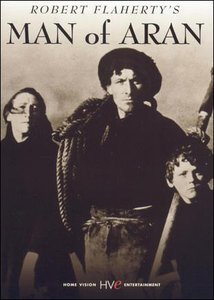 Story of movie Man Of Aran :
Story of movie Man Of Aran : 